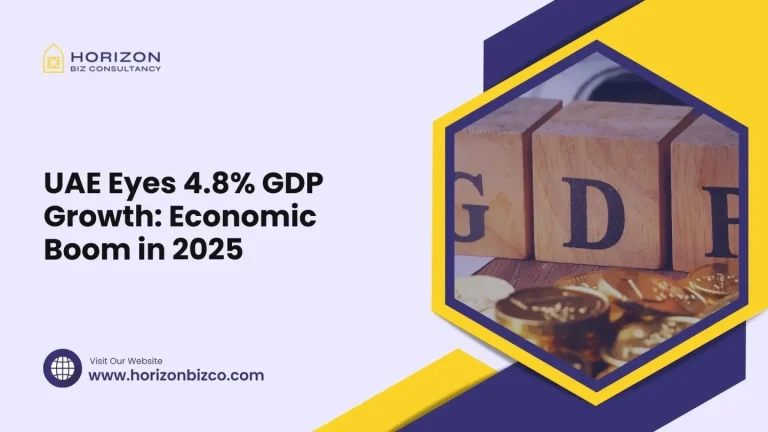Several elements are providing tailwinds for faster UAE expansion next year:
The Non-Oil Private Sector is Gaining Momentum
The UAE has invested heavily to grow and diversity its economy beyond oil and gas. These efforts are bearing fruit, with the non-oil private sector forecast to lead overall GDP growth. Specific projections include:
- 4.6% expansion for the non-oil economy in 2024
- Ongoing mega projects driving follow-on growth into 2025 and beyond
Major new developments like Dubai’s urban revamp Dubai Creek Harbour and the $6.8 billion Dubai Creek Tower support rising tourism, retail, construction and other industries outside of the energy arena.
Why is There Such a Focus on Growing Non-Oil Sectors in the UAE?
Oil exports have powered the UAE’s tremendous economic success for decades. But having one dominant industry poses risks should energy markets face downturns. So the government aims to actively cultivate other resilient sectors.
Expanding areas like renewable energy, biotechnology, tourism, financial services, and logistics helps the economy handle changes in global oil demand and prices better. A more balanced economy with multiple strong pillars is crucial for sustained prosperity.
Emerging industries also create quality private sector jobs for Emirati citizens, utilize their skills and education, bring in foreign talent, and keep the UAE competitive as the world transitions toward clean energy.
Travel and Tourism are Ramping Up
Tourism appears set for robust rebounds after COVID-19 disruptions. For Dubai alone, visitor numbers hit nearly 19 million in 2023. Experts estimate over 19.4% higher arrivals in 2024, followed by another year of double-digit growth in 2025.
Upgrades to airports, attractions and entertainment offerings continue widening the options for visitors across the seven emirates. Landmark happenings like the Dubai Expo 2020 also raised the UAE’s profile globally. As aviation recovers and rules relax further, travel and tourism seem primed to drive GDP gains for years ahead.
Why is Tourism Surging in the UAE Recently?
The UAE offers stunning architecture and luxury resorts in desert settings. It creates an appealing image for travelers everywhere. Emirates like Dubai and Abu Dhabi offer everything. You’ll find thrilling theme parks, excellent museums, and fantastic events. The UAE shines among Middle Eastern countries. It offers great amenities, strong connections, and welcomes diverse cultures.
Major tourism milestones showing the sector’s ascent include:
- Dubai surpassing 21 million hotel room nights booked last year
- Abu Dhabi hotel occupancy hitting over 70% recently
- Dubai’s airport retaining its #1 ranking globally for international passenger traffic, with connectivity to almost everywhere
- Streamlined entry procedures through the new pan-GCC tourist visa
Looking ahead, openings like the Museum of the Future and SeaWorld Abu Dhabi add to remarkable attractions list. Given the rare experiences available across the seven emirates, tourism seems sure to drive economic gains for years.
How is Expanding Trade Supporting UAE Growth?
Trade is emerging as another engine of expansion as the UAE deepens commercial ties worldwide. Total merchandise trade blew past $800 billion in 2021. Which advantages make the country such a trade magnet?
Strategic Location
Sandwiched between Europe, Asia and Africa, the UAE provides companies easy access to over 2 billion customers across these regions. With sea routes connecting East and West, the advanced ports make it a logistics fulcrum at the crossroads of vital global trade arteries.
Business-Friendly Practices
Free trade zones permitting 100% foreign ownership draws multinational companies. The lack of corporate tax and import duties also incentivize trade and commerce. Efficient digital government services and advanced transportation infrastructure enable supply chains.
Widening Agreements
The UAE continues to deepen trade relationships worldwide by inking economic agreements. Recent deals include the landmark CEPA pact with India as well as agreements with Israel, Indonesia and Turkey. More partnerships translate into greater commerce volumes.
With its geographic, infrastructure and policy advantages, the country seems destined to remain a thriving mercantile crossroads for years ahead.
What Potential Risks Could Impact the Outlook?
Most experts feel the UAE economy retains good momentum heading into 2025 barring major external shocks. But there are some risks on the radar that bear monitoring:
- A deeper global slowdown than expected as rising interest rates and inflation weigh on major economies
- Additional aggressive Fed rate hikes strengthening the dollar and affecting emerging market assets
- Mounting pressures from COVID-19 resurgences or new coronavirus variants
- Higher oil prices weakening consumer demand if they surpass projections
- Geopolitical tensions escalating regionally or worldwide
Still the UAE economy looks well positioned to weather various storms due to strong buffers and responsive policies if needed.
Conclusion
- The data suggests the UAE’s GDP growth could accelerate to around 4.8% in 2025
- Central drivers likely include non-oil sector expansion, the travel/tourism rebound and swelling trade
- Government initiatives like the Make it in the Emirates campaign are also providing tailwinds
- Further economic opening and reforms should support the UAE’s continued ascent for years ahead
The country holds key strengths that are set to bring broad benefits in 2025 and later. With strong economic leadership, the future looks bright for the UAE’s next 50 years.
Frequently Asked Questions
A. The UAE economy is forecast to expand by around 4.8% in 2025 according to the latest estimates.
A. Government diversification policies are supporting more business activity in areas like tourism, transportation, construction and technology.
A. Arrivals could expand over 20% in 2024, then sustain double-digit growth again in 2025 based on projections.
A. Rising commerce allows UAE companies to access fast-growing markets. It also cements the country’s status as a global trade hub.
A. Key global economic threats include higher inflation and interest rates. COVID-19 and elevated oil prices could also affect regional growth.





